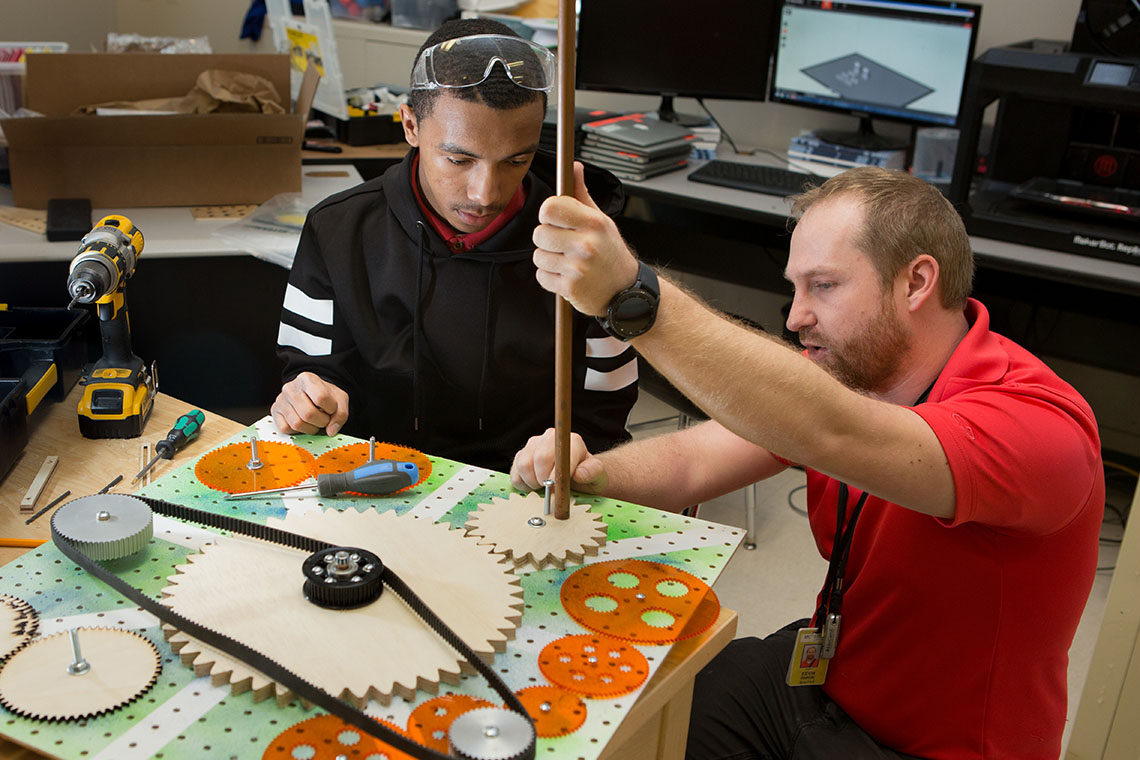As we enter into a new school year, it can be helpful to establish a high standard for quality work and deep learning in the classroom. To that end, we are resharing this post by John Larmer from Aug. 17, 2018, and hope that it inspires you to create a culture of quality work as you plan for PBL with your students.
“I thought the project was going well…but by the end, I felt that the work my students produced was not as good as I imagined it would be. I was a little embarrassed and almost wanted to dial back the audience’s expectations on the night of the presentations!”

This is a common concern of teachers who are new to Project Based Learning. Things can appear to be going smoothly: students are engaged by the project and they are busy and meeting deadlines. However, at the end of the project the evidence of their thinking and learning is not as robust as it should be, and their final products are not polished. If this is your experience, ask yourself some questions:
1. Did I use rubrics, exemplars, and industry professionals to help students understand the quality of work expected?
Simply telling students that you want them to do high-quality work is not enough, nor is giving them a checklist that tracks completion, but not quality. Most PBL teachers know they need rubrics in order to assess the complex products and performance tasks typically seen in projects. But rubrics should also be used throughout a project as a tool for guiding students as they work. Introduce rubrics near the beginning of a project, and take the time to help students understand the expectations the rubric conveys and practice using it to analyze work.
To have students practice using a rubric, find exemplars of the kind of work required in the project. You could find real-world examples made by professional adults, or use student-created examples from past years. For example, if students need to write a scientific report after an investigation, show them one – on a different topic, to prevent direct copying. If they need to build a museum-style display, take them to a museum or visit its website. If the product is a presentation, a designed artifact, or a work of art, show videos, photos, or physical examples. Have students use the rubric to assess the quality of the exemplars and debate their evaluations until the class arrives at a consensus and is “calibrated” on the criteria.
Connecting students with professionals in the field of study can also help students to understand the criteria used to judge the quality of a work product in the world beyond school. For example, you might have students speak online or in-person with an engineer to learn how she defends the mathematical models used in a proposal for a new construction project, or hear from a sculptor about how he puts together a proposal for a piece of public art.
2. Did my project include effective formative assessment?
Your project calendar should include frequent and varied opportunities for students to demonstrate their learning, check their understanding of key concepts, and get feedback on their work. Teach students how to use critique protocols (such as the Tuning Protocol, gallery walk, or charrette) that emphasize what Ron Berger calls “kind, specific, and helpful” feedback. Make sure students use rubrics or other established criteria as the basis for giving critique. When possible, invite other adults (such as project mentors from the community) to participate in critique protocols or to provide other targeted feedback to students.
Of course, the teacher also must provide feedback and critique, so make sure yours is based on clear quality criteria and arrives in a timely fashion. According to researcher John Hattie, effective feedback is one of the top ten most powerful instructional strategies for improving student performance and closing achievement gaps. Use workshop structures, student conferences, and staggered checkpoint dates to ensure that you are able to provide thoughtful feedback to all students. Make sure that your feedback is substantive, aligns to learning targets, and provides students with strategies and lessons that they can apply to the task at hand but also transfer to other tasks.
3. Did students have enough time to revise and polish their work?
Especially the first time you conduct a project, it can be difficult to estimate the time it will take for students to create high-quality products. After students receive feedback, they need time to reflect on it and revise their work. Be sure to build time for feedback, reflection, and revision into your plans from the beginning.
Maybe it’s hard to imagine adding another few days to your project calendar. The need to “cover” content frequently causes tension in PBL. So, consider your goals: what level of quality will students need to achieve in order to demonstrate deep learning and create work they can take pride in? (A word of reassurance: the more you use PBL in your teaching, the better you’ll become at finding the balance of time and quality that maximizes student learning.)
4. Did the project feel authentic enough to motivate students – did they care?
A project should increase students’ motivation to learn and produce quality work for several reasons:
- Students care about the issue, problem, or topic of investigation because they see its relevance to their own lives. The answer to the project’s driving question matters to them.
- Students care about the fact that they are producing work for a public audience. It’s not just another instance of turning something in to the teacher, or another casual presentation in front of the class. Students will come to know the quality of a product matters if they want to make an impact in the real world. They are going to want to impress people and not be embarrassed when they share their work, whether it’s a live presentation of a solution to a community problem, the launch of a website they've created, or a demonstration of a product in front of its intended users.
- Students feel a sense of authenticity when they collaborate with adult professionals, experts, parents, or community members during a project. “We’re working as these adults do,” students will think, “and they don’t do shoddy work.” And those outside adults – often more powerfully than words from a teacher – can encourage students to do better work.
5. Does my classroom – and my school – cultivate a culture of quality?
In addition to the above, there’s a less tangible but very important aspect to getting students to do high-quality work: culture. Through the stated and unstated beliefs promoted by adults, and the structures and rituals of a classroom – or more effectively, throughout a school – students get the message: we do good work here.
Talk as a school staff about how to promote commonly-held classroom norms that encourage students to take risks, be persistent, value feedback, and expect much of themselves and their peers. As Ron Berger says in his seminal book, An Ethic of Excellence: Building a Culture of Craftsmanship with Students, “when students expect excellence out of each other and hold each other to high standards, you’d be amazed what can happen in a school.”
“Build the Culture” is one of the Project Based Teaching Practices in our model for Gold Standard PBL. For more, see this blog post I wrote about it in 2016.

